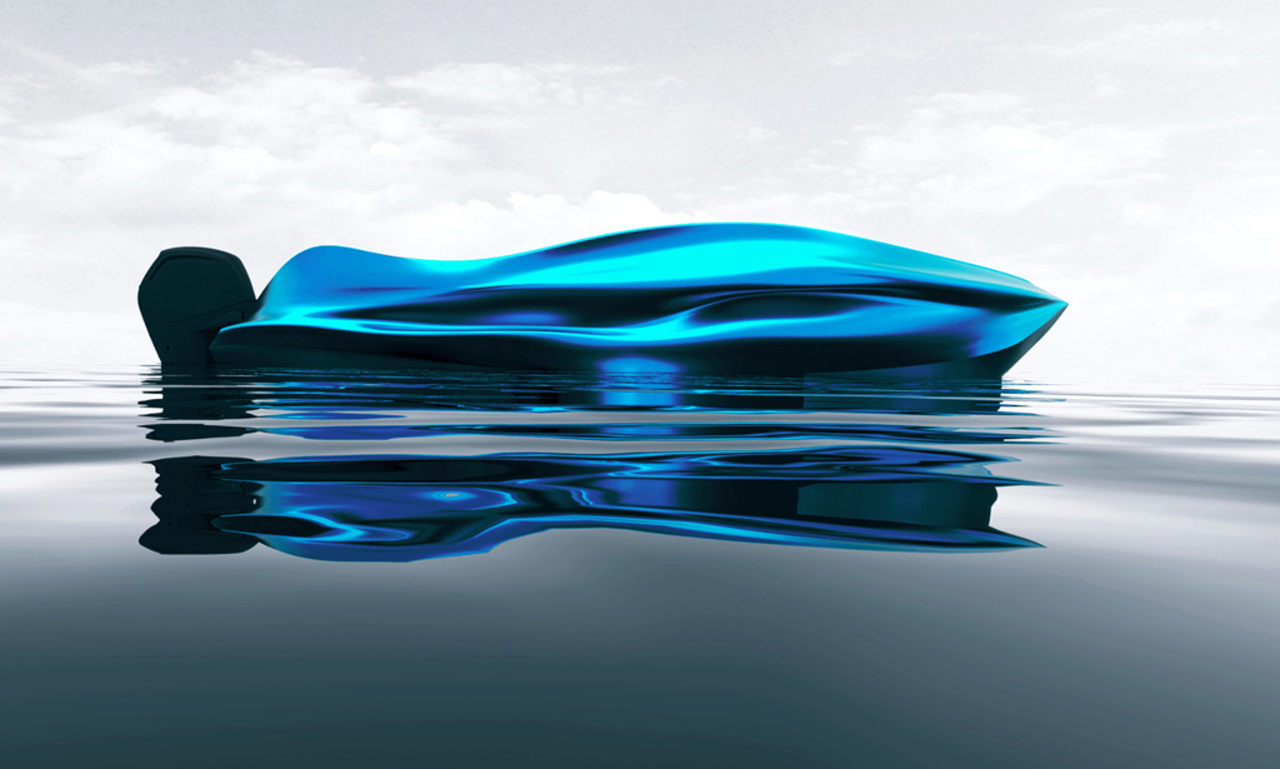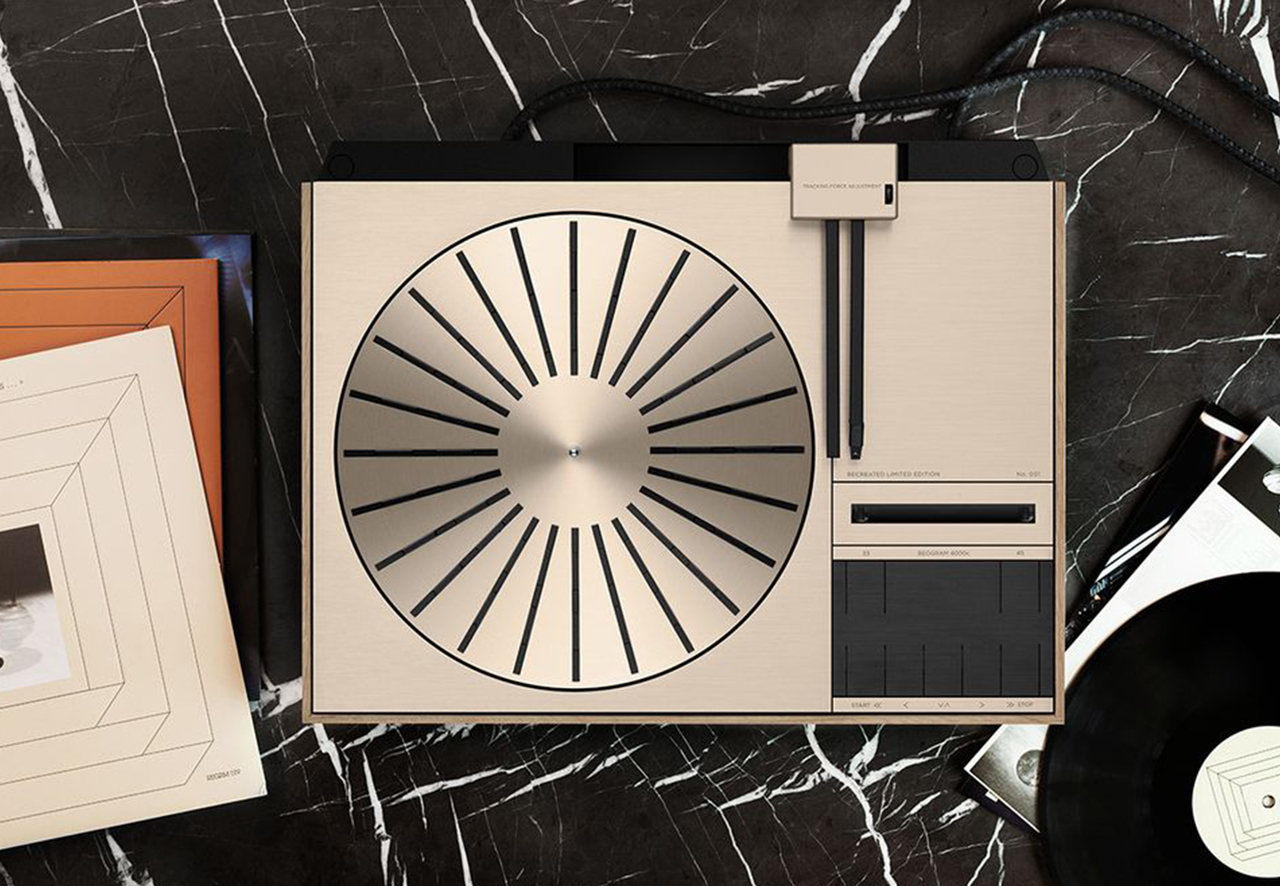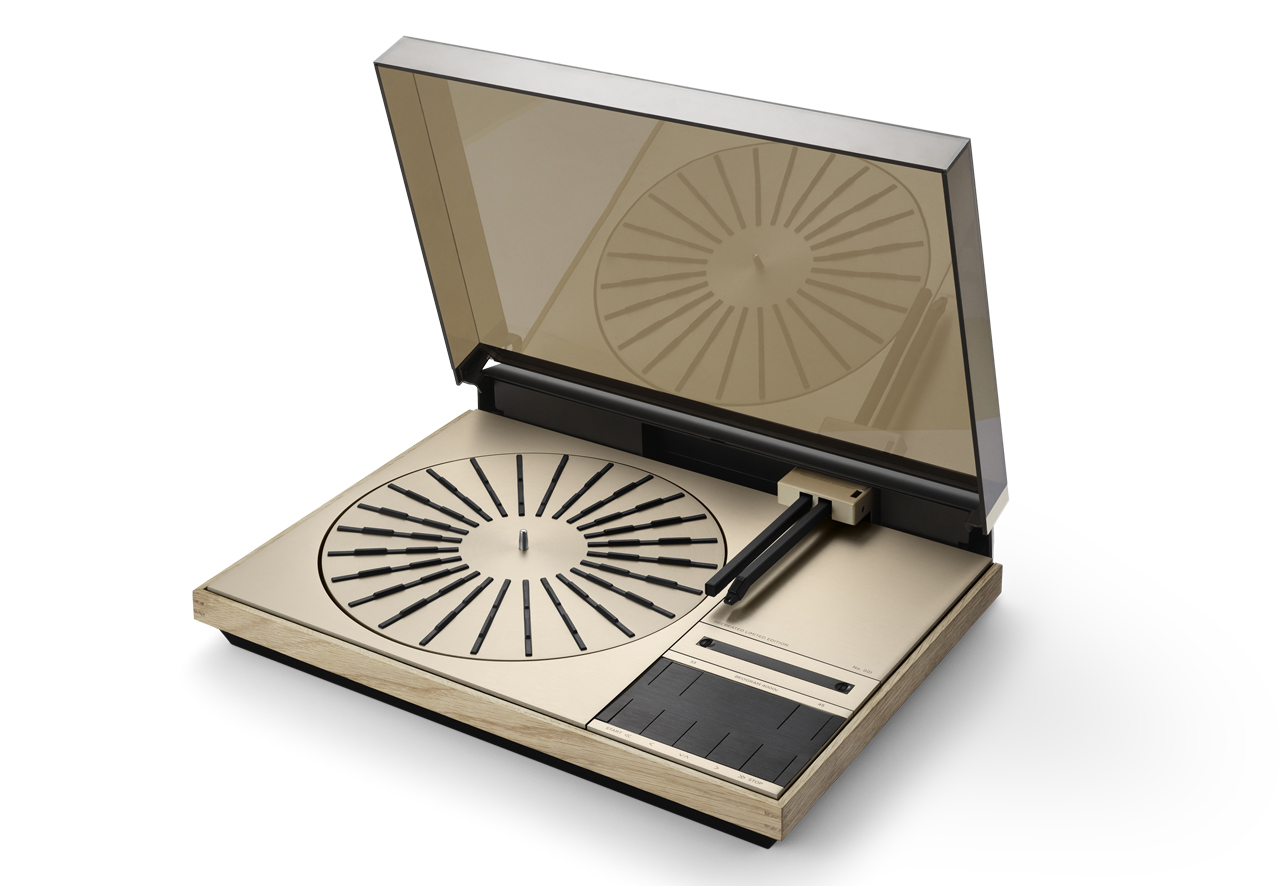Everything
Rocking The Boat
We’ve heard the term thrown around, usually due to its controversial ability to make, literally, anything, but 3D-printing is still somewhat of a mysterious future-cliché. However, as the technology starts to become more prevalent (BMW has begun testing it to make parts for their Superbike team) its limitlessness as a prototype creator is becoming more viable. Italian start up Moi Composites, is a 3D-printing tech company that uses “continuous fibre manufacturing” to realise new design through a specialised flow of composite fibres. Their foray for 2020 is MAMBO. Not to be confused with the Australian apparel label, MAMBO stands for motor additive manufacturing boat. And it’s a world first. Coined a “performance-optimised water-vehicle”, the completely fiberglass speed boat caused a stir at the Genoa boat show in early October. The brains trust at Moi had been touting its reveal since November of 2019 and thankfully, with the use of their patented technology (a proprietary process innovation to create high-performance products out of composite fibres and thermosetting resin that robots implement) the team were successful. The boat itself, aside from its sci-fi conception, is impressive in both aesthetics and aerodynamics. It spans 6.5 metres in length and 2.5 metres in height but weighs only 800kgs. Light for a vessel of such size. The potential for this kind of mould-less manufacturing is enormous. The systematic nature of 3D-printing means it can produce tailored products for individual clients and produce organic wave-like designs that aren’t possible using traditional fibreglass boat-making methods. The future of boating – and all other product-building, perhaps – is here. Too good to be true? Apparently not. Hey Siri, turn on the InkJet and print me one boat please.
For order inquiries and more information on Moi Composites, visit the website here.
![]()
The Fifth Element
There’s an unintentional irony that comes with this PlayStation launch in 2020. Naturally, the impending release of its fifth-generation console has commanded plenty of hype from gamers worldwide. Hordes of tech-lovers eagerly awaiting its promised high-speed SSD, its sensory haptic feedback and the brand-new adaptive trigger functions. But it’s the business behind it, the ‘No Limits’ branding, that tethers it to a world parallel. A pseudo existence of perpetual potential – one almost humorously opposed to the pandemic-limited one we’re in right now.
The honchos at PlayStation estimate that by April next year, over seven million units will have been sold worldwide. And with a launch date of November 12, that’s some fire projection for a meagre five months on the shelf. But everything about Sony’s drip feed has professed it to be both progressive and impressive. Right down to its astro-minimalist design. A black and white, Storm-Trooper-silhouette console that is also, in fact, the largest to date at 39 cm tall. While there has been some question around its playback of PS4 games, Sony assures that most will be compatible. Titles-wise, most excitement has been around launches like Marvel’s Spider-Man: Miles Morales as well as the just-announced coup that Final Fantasy XVI will be released exclusively for PlayStation. At around AU$750 it’s a pricey investment in your gaming future (and goes dollar for dollar in competition against Xbox’s impending Series X release) but given this is only the fifth complete product launch since Sony’s very first console way back in 1994, then you’re likely to be holding on to it for some time. For those us whom still recall those early days of tethered controllers and simple, single-player games, the genre now rockets on a trajectory beyond our comprehension. So, it’s somehow comforting to note that racing simulation game Gran Turismo is releasing its 7th incarnation. Some 22 years since we first popped it into our matte-grey, spinning-disc set-up and played against, well, the computer. Times and graphics may have changed but perfecting a sharp turn at 200 mph on the El Capitan raceway will never get old.
Sony Playstation 5, SHOP NOW
![]()
Time Will Tell
According to BVLGARI, the Octo Finissimo Steel continues a timepiece “saga”. And how fitting for such a storied Italian luxury house. Of course, a new model within its award-winning watch range could never be so banal as to simply be a new “chapter in a story”. Rather, the Finissimo’s next generation is of operatic grandeur. Hyperbolised so decadently by the Italian innovators, everything about the Finissimo is elevated. Well, perhaps everything except in literal form. Since its inception in 2014, the technical engineering of its impressively slim size has seen it earn six world records for feats of design. Like their Aluminium – which set a new utility for men’s watches during the late nineties when most others crooned in modes of Rolex Datejusts and IWC Pilots – the Octo continued to shape a new code for do-anything, be-anything wristwatches in the early 2000s. Its guise is wonderfully reflective of BVLGARI’s foundations, an octagonal design that draws on architectural history via the 310AD Basilica di Massenzio, while its mechanisms point to the luxury house’s exceptionally progressive modernity and state of the art workings. Crafted from satin-polished steel, this automatic has been launched both as a polished black and polished blue dial. Described as a “powerhouse of technical execution”, the Finissimo is a collectable timepiece for a new generation of wearers – its predecessors have been worn on headline makers such as Zayn Malik and Christiano Ronaldo. This is a timepiece that aims to ingratiate as appropriately with the crisp white cuff on a boardroom executive as the tattooed forearm of an intrepid creative. Iconic, useful and wildly impressive, the Finissimo’s saga might preach a utilitarian new day but with hardware of this gusto on your wrist, bragging rights remain safely intact.
Octo Finissimo Watch, BVLGARI, SHOP NOW
Walk on Water
Improvise. Scavenge. Protect. Adapt. This is Nike’s set of long-term principles outlined early last year. A manifesto devised by a team that studied obtuse global impacts on the footwear giant. Things like how we commute, the changing climate and limitations of lifestyle. ‘ISPA’ is now a fundamental part of the brand’s future-protection agenda. As a behemoth named 2020’s “most marketed brand on social media” (by online analytics platform, Hookit), Nike’s place on the cutting edge is essential. Being such champions of invention, merging progression with innovation is part in parcel. The 2020 release of the Drifter Gator ISPA is part of this new, conscious footwear movement. It’s a multi-tasking, light-weight tread evolved from the Nike VaporMax Flykint Gator. A wet-weather-protecting design aims to mimic the operation of a hoodie via a zipped pocket attached to the heel that releases a water-resistant mesh net. One that can be worn all the way to the knee if conditions require it. First released in July of this year, the latest drop boasts a colourway of a bright white upper and a “Hyper Crimson” trim. As far as technical footwear goes, these are a winner for agility and snacky novelty. Design-wise, its multi-layered, multi-fabricated fashioning has been a source of mixed reviews. But the future is far from all-about-trend for Nike. In addition to the ISPA project, their Move To Zero commitment model has also seen them take responsibility for environmental impacts and forge premium ongoing sustainable methods. This, as they say, is all part of not only future-proofing their business, but the future of sport as a whole.
ISPA Drifter Gator, Nike, SHOP NOW
The Tables Have Turned
There are few products in the world so prolific that they warrant a place in the Museum of Modern Art in New York. But Bang & Olufsen’s Beogram 6000 turntable is one. Designed by Jacob Jensen for the Danish electronics label in 1974, his particular innovation was to use a tone arm that moves tangentially over a record. Along with his prescient aesthetic for a dial-less board, the result was a streamlined plane that revolutionised the future of music playback. So, it’s not surprising that Bang & Olufsen have chosen to honour their signature piece with a 2020 remaster. The Beogram 4000c will be a limited-edition release of 95 original sets – a number chosen to mark the brand’s 95th year in operation. Each re-worked record player has been sourced, updated and refurbished, then dismantled and reassembled by a team of specialised experts at their facilities in Struer, Denmark. The outer has been replaced by a solid oak frame and the original aluminium anodised for a moody, modern glow. All interior parts have been revamped too, ensuring supreme sound and state of the art functioning. This move to retrospection from B&O is a sound (pardon the pun) attempt to both mobilise a classic into a new era and iterate that ground-breaking design never goes out of style. Given its contemporary generation, however, the systems have of course been modified to suit our ever-complicated home-integration systems. Each player is fitted with a built-in preamplifier and a new custom moving magnet phono carriage for optimal quality. At this stage, this piece of electronic architecture is only available in Europe, but with a price tag of around the AU$15,000, its possibly one for vinyl aficionados only, anyway.
Beogram 4000c, Bang & Olufsen, SHOP NOW
![]()
The Canyon Run
Highly tapped footwear lord, Salehe Bembury is behind the latest ruckus-causing launch from New Balance. The current vice president of sneakers and men’s footwear at Versace (and former Yeezy creative) has collaborated with the Dad-sneaker super brand to revisit its iconic 2002 model. Bembury’s influence over the original form, most commonly seen muddied and kicked off at the front doors of most runners in America, is very revitalising and just a little bit ironic. Bembury is a pioneer, a master designer and a voice for a new generation in luxury design. His resume is rich with sneaker corps. In addition to Versace and Yeezy, he’s been responsible for footwear innovations at Cole Haan and Greats, even starting his career designing men’s and women’s shoes for cheap-as-chips trader Payless. While he’s admitted he was unsure how a collaboration with New Balance would play out, the New Yorker-turned-LA-resident seems to have dreamed up just the ticket to get people waitlisting. Inspired by the rich Ombre earthen ranges of the Antelope Canyon, Arizona, the Salehe Bembury x New Balance 2002R is covered by a burnt orange suede. It’s then complemented by a turmeric tinted mesh – something retained from the original design – and contrasted by a punchy cobalt blue logo. “Peace be the journey” is the theme, a Jamaican phrase that denotes his global outlook while playing on New Balance’s literal foundations as a preferred brand by hard core runners. And it’s this balance between fresh style and trusty workings that will no doubt see its October launch become the beginning of a cult must-have for sneaker fans everywhere.
For more information on upcoming New Balance co-lab launches, visit the website here.
![]()
Reinventing The Wheel
The pandemic has given unexpected, and quite sudden, elevated status to certain ubiquitous items. The humble home office chair, for example, sold out everywhere because Wegner Wishbones are not born of ergonomics. Baby gates – skyrocketing because toddlers, pets and annoying flatmates are no longer cute in Zooms. And let’s not get started on the toilet paper. Then, of course, there’s the bicycle. Local cycle stores have been inundated with a tidal wave of new riders, queuing outside, keen to swap their germy public commutes for some contactless pedalling. But with all good intentions, post-lockdown, most of us probably identify more with Gabriel Gate and all the cheese than the King of the Mountain and all the exercising. So, we’re here for an electric bike of the future. Solo travel, germ-free, without the need for truck-sized quads. The Reevo, by Beno Technologies, proposes to be the iPhone of e-bicycles. A model taking a revolutionary gambit on a usual suspect. It describes itself as “style, security and safety for the modern urban cyclist”. Firstly, let’s talk about the wheels. Coined a “hubless e-drive” its tube wheels operate via a bearing on the rim rather than a traditional spokes-and-chain set up. But it’s a style that digs up controversy from dedicated cyclers. They argue such design is more about an über-wow factor than superior performance. Regardless, the Reevo also features automatic LED brake, signal and head lights for optimum safety, a rechargeable (and removable) battery and a 750-watt motor. It can also reach a cool 40km/h on the road. So, with all this tech, surely we’re not cool with tying it to the tree outside the café? Well, Reevo is as much about anti-theft as it is about schmick-ness. The design incorporates a touch-ID biometric lock meaning only the owner can start it, while a GPS tracking system and a built-in automatic wheel lock aims to make the bolt-cutting-thieves of old shit out of luck. The Reevo is here to write a new chapter in commute-bikes, but before you go kicking your rusty cruiser to the kerb, it’s still in prototype form. Rallying to start production via a (somewhat controversial) crowdfunding campaign, at time of printing its goal had already been superseded by 1000%, garnering nearly AU$1 million from a pool of backers. So, with this much support, by its proposed launch in April 2021, the Reevo just might be the pandemic’s most successful new gadget.
Reevo Bike, PRE-ORDER NOW
![]()
Living In A Bubble
The future of air travel is something no one is certain of right now. Undoubtedly, we will eventually return to horizon-hopping, however, just as the terrorist attacks of September 11, 2001 changed airport security forever, the coronavirus of 2020 has likely changed our personal security forever. We’re on a permanent state of high alert for virus contraction, and it’s a mindset that may last long after Covid-19. So, perhaps it was only a matter of time before our fabric face masks were given the high-tech treatment. Inspired while skiing in Utah with his family, entrepreneur and industrial designer Michael Hall noticed how his ski goggles would fast become “wet, cold and gross”. So, he began developing an air-flow-helmet that could essentially host its own “micro-climate” and soon after AIR by MicroClimate was born. At first glance, it beckons a confronting E.T.-in-the-end-scene vibe. Disconcerting in a claustrophobic kind of way. However, when you liken its application and utility to something as normal as ski goggles or protective eyewear, then the idea of a head cover to protect you on a long-haul from the revoltingly close sneezer in seat 25C, then it’s not so far-fetched. AIR uses patent-pending HEPA filters that cleans both inlet and outlet air. It’s also rechargeable, syncs with wireless earbuds and weighs only 90 grams. The acrylic visor screen won’t fog up thanks to specialised exhaust ports and also means the chamber won’t reverberate to sound like audio from the Apollo 11. It seems Hall has concocted a pandemic assailant, doing some of the heavy lifting for virus-protection before any antidote is founded. And, given the pandemic may loiter for years yet, air (and even bus or train) travel might see these personal bubbles become commonplace. Now we just need to figure out how to fit a sleep mask over it, because while everything else has changed we still want to block out the guy in 25C.
Air, MicroClimate, SHOP NOW





